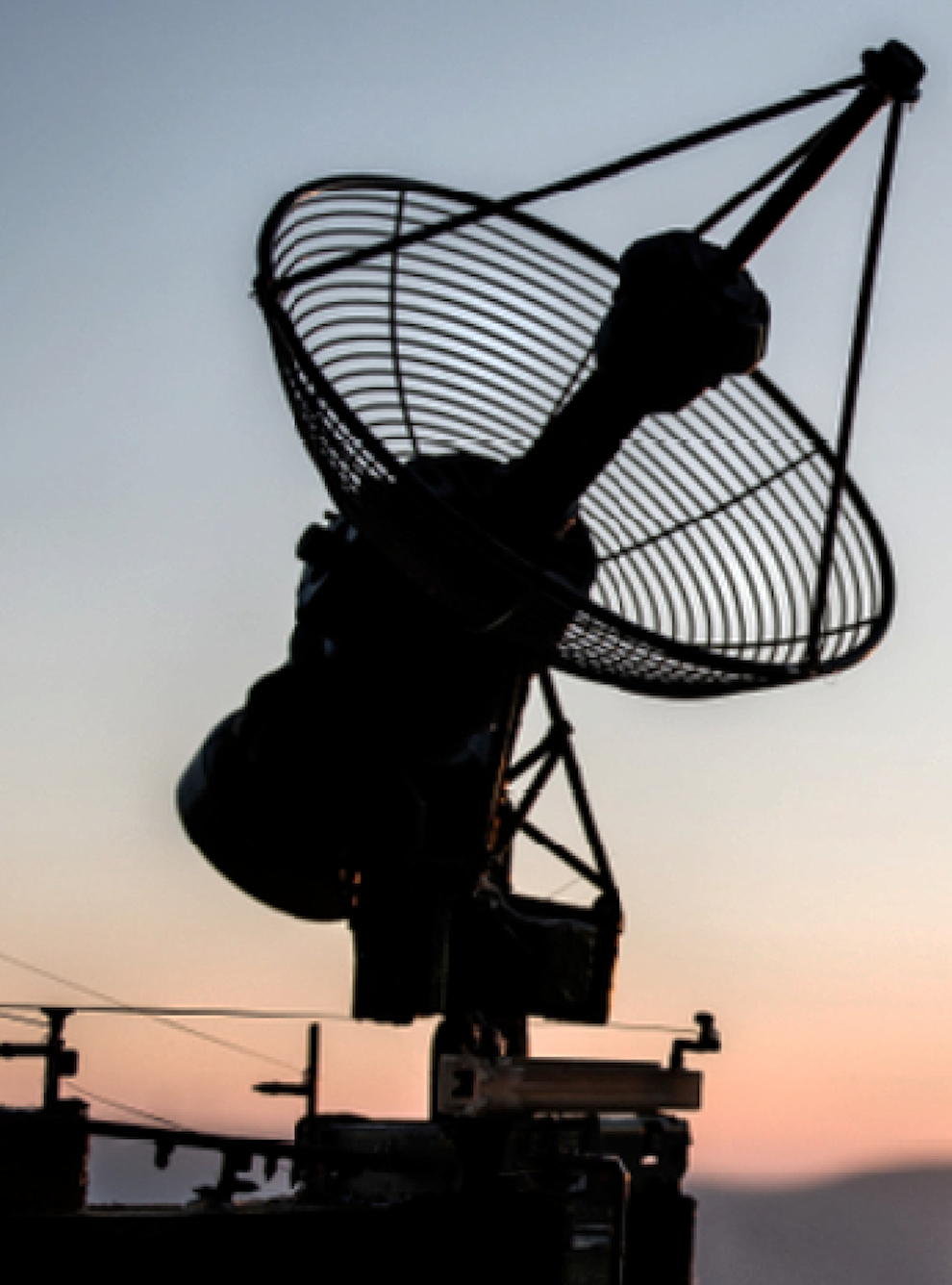EM&C — Opening the door to an integrated
Satellite Architecture for the Military
Rapidly growing information requirements and the increasing unpredictability of the location, nature, and types of conflicts make satellite communications systems more important every day. Using commercial bandwidth to augment the military’s dedicated capabilities is essential to providing global coverage.

The goal is a future military SATCOM enterprise that will leverage all available satellite capability in a way that is transparent to the user, much like turning on a cell phone. Several key government programs will help enable this vision, with the linchpin being enterprise management and control (EM&C).
Kratos Defense & Security Solutions, Inc. is one of the companies playing a key role in achieving both the broader strategy, and EM&C in particular. GSR recently spoke with Frank Backes, senior vice president for Federal Space at Kratos, to discuss EM&C and how it will open the door for the military to embrace next-generation satellite solutions, including the SES O3b mPOWER satellite service.
Government Satellite Report (GSR) Good day, Mr. Backes. Please explain what EM&C is and why is it something the military needs?
Frank Backes
EM&C supports the military’s strategic goal to operate an integrated SATCOM enterprise and increases assured SATCOM access for the warfighter with legacy and nextgeneration terminals. It seeks to improve the effectiveness of the DoD’s critical SATCOM infrastructure by enhancing resilience.
Among the goals of EM&C are giving more satellite link choices, reducing resource allocation times, improving bandwidth efficiency, and providing situational awareness to SATCOM. It allows military and commercial satellite communications systems to be tied seamlessly into the terrestrial infrastructure.
For example, Kratos’ Global Sensor Network helps the government detect and resolve RF spectrum challenges. With EM&C, data collected through this network and other sensor networks, such as the SES satellite network, is fused and pulled into the Unified Data Library (UDL) and accessed by our military. EM&C gathers data from sensors into one accessible, cloud-based environment that can be viewed through a common operating picture. Its success rides on providing clear, concise, and actionable data to decisionmakers in an operationally relevant timeframe.
GSR
What benefits would an integrated commercial and military satellite architecture deliver to the military?
Frank Backes
We believe an integrated architecture allows the military to leverage the investments the commercial sector have made in innovative technologies. Advanced commercial technologies have added benefits, including increased resilience to interference, jamming, or environmental effects, far more rapid resource allocation, improved situational awareness, and increased bandwidth utilization efficiencies. The military can benefit from commercial innovation if they can switch seamlessly between government and commercial satellites – regardless of ownership. Operating as a seamless network enterprise gives the military more options allowing flexibility, scalability, and resiliency.
GSR
What are the current technological impediments to this being a possibility? What interoperability challenges exist?

Frank Backes
Frank Backes
Unfortunately, multiple organizations independently pursuing their own mission needs have produced a number of ground-based proprietary satellite communication solutions, which have created a lack of interoperability between different commercial services and the armed forces. Those same proprietary solutions remain roadblocks to a dynamic SATCOM infrastructure supporting communication for an evolving military theater.
Currently, terminals cannot automatically switch between different satellites, and warfighters are challenged to communicate to networks outside of their domain. If terminals are jammed, it can be timeconsuming to execute the current system to locate and help switch to reliable communication links. If redundant terminals or gateways are not available, alternative waveforms may not be automatically accessible These challenges go beyond our own military and answers must include a holistic approach that ties in our allies.
GSR
What is the Flexible Terminal Interface (FTI) and what role will this play in enabling an integrated satellite architecture?
Frank Backes
FTI is an interface standard that has been defined by our government. It can be added to existing terminals as either a software or lightweight hardware-based interface upgrade. It provides management and communication functions, plus, it allows roaming between terminals that would not normally communicate with each other.

“…multiple organizations independently pursuing their own mission needs
have produced a number of ground-based proprietary satellite communication
solutions, which have created a lack of interoperability between different
commercial services and the armed forces.” — Frank Backes
EM&C determines why, when, and how the system should roam and transition utilizing flexible terminals to access diverse SATCOM resources.
EM&C enables the terminal to have awareness of other network options operating on alternate satellites and automatically switch to new networks to avoid interference. By monitoring the RF environment and impacts to performance, its system logic determines best available SATCOM resources, coordinating and connecting users on each end as needed.
Think of it as being like a roaming cell phone capability. It doesn’t matter if you have AT&T or Verizon or Sprint, you can talk to anyone regardless of the provider.
GSR
What pilot programs and testing programs is the military conducting regarding the FTI and EM&C? What work is Kratos doing on these programs?
Frank Backes
The U.S. Air Force has continued to define details of the EM&C architecture over the past several years. These efforts have included funding a Pilot Phase 1 study, which solicited feedback from Industry on possible solutions and recommended architectures, followed by a Pilot Phase 2 effort, which funded several companies to demonstrate prototypes of the EM&C architecture. Both of which Kratos was a participant.

“Right now, terminals cannot automatically switch between different satellites,
and warfighters arechallenged to communicate to networks outside of their domain.”
– Frank Backes
Successful demonstrations were then carried out in December of 2018 and January of 2019, showing the ability to roam among heterogeneous networks, enabling secure SATCOM across multiple operator networks. These demonstrations used a U.S. government multi-band satellite communication terminal and gateway equipment representative of a current deployed infrastructure.
In March of 2021, a successful demonstration was hosted by U.S. European Command (EUCOM) and funded by the Advanced Battle Management System (ABMS) program. SATCOM situational awareness was demonstrated to an operationally secure environment utilizing commercial resources. EM&C capabilities highlighted a means for providing real-time satellite communication end-to-end connectivity status and operational readiness.
It also showed the ability to restore satellite service in response to interference and the capability to gather and fuse information into the UDL from sensors and satellites that included coalition partner sources. Kratos’ partner SES provided the SATCOM capacity for this demonstration.

“Among the goals of EM&C are giving more satellite link choices, reducing resource allocation times, improving bandwidth efficiency, and providing situational awareness to SATCOM.”
– Frank Backes
GSR
SES is poised to launch their next-generation Medium-Earth Orbit (MEO) satellite solution in the coming months which is part of a larger industry trend of launching High Throughput Satellites (HTS) in orbits closer to Earth. What do these new satellite constellations offer that the existing Wideband Global SATCOM (WGS) satellites don’t? Why should the military be excited for this next generation of satellite constellation?
Frank Backes
WGS is a MILSATCOM Geostationary Orbit (GEO) constellation that provides wideband communication to the U.S. military and our allies. The satellites are far away from earth, extremely expensive, and take a long time to build. Also, there are not many satellites in the constellation, and some consider them easy targets to peer adversaries. This does not mean that WGS no longer serves a purpose. WGS is still a central element of the DoD’s SATCOM infrastructure.
However, the newer constellations can offer higher capacity, lower latency and more diverse communication paths that enhance resiliency. Right now, if you look at the terminals supporting fixed U.S. Army or Air Force command posts, the DoD has to coordinate for the channel days or months in advance if using military channels or pay a lot for the throughput for a specific channel. With the commercial SATCOM in Low- Earth Orbit (LEO) and MEO, you pay just for the service being used and it can be consumed almost immediately. EM&C offers a means to have situational awareness on this complex network and potentially enable active roaming.
GSR: Are FTI and EM&C necessary for the government to utilize satellite constellations like the O3b mPOWER satellite service? How could EM&C and FTI make it easier and more seamless for the military to use satellite constellations like these?
Frank Backes
We believe the DoD would benefit from compatible terminals that the FTI would support. Terminals would be available in different sizes for different users but all equally capable of talking to LEO, MEO, and GEO satellites. In a complicated network that includes many satellites in multiple domains, EM&C would control the operation for deployed warfighters. It would do the work and automatically choose the best satellite based on relevance, availability, and capability.
GSR: Beyond terminals, are today’s ground systems ready for such broad operational vision? What commercial approaches can augment and perhaps support future Joint All Domain Operations (JADO)?

Frank Backes
Ground systems are not completely ready and that is why we announced the OpenSpace Platform this year. The OpenSpace Platform is a commercial, virtualized software solution with advanced networking capabilities. Virtualized processes can remove dependence on proprietary and expensive hardware. Features available through the platform increase security, offer just-in-time deployments, reduce hardware footprints, and enable cloud-based solutions. Commercial approaches such as the OpenSpace Platform can indirectly augment and support JADO.

“In a complicated network that includes many satellites in multiple domains, EM&C would control theoperation for deployed warfighters. It would do the work and automatically choose the best satellite based on relevance, availability, and capability.”
– Frank Backes
For example, Kratos’ Global Sensor Network provides Space Domain Awareness (SDA) which is essential to JADO. The network uses the OpenSpace Platform to configure RF hardware such as antennas, digitizers, and software to collect, process, and disseminate data. Advanced SATCOM capabilities available from 03b mPOWER’s constellation can also augment and support JADO. In turn, mPOWER’s constellation could benefit from SDA capabilities provided by Kratos’ Global Sensor Network.
For additional information about how Ob3 mPOWER can enable next-generation technologies on the battlefield, select this direct link to download a complimentary copy of the whitepaper, “High Throughput Satellites for U.S. Government Applications.”
This article first appeared on GovSat and is republished with permission of SES and GSR.
ses-gs.com/govsat
www.kratosdefense.com

Ryan Schradin is the Executive Editor of GovSat Report. A communications expert and journalist with more than a decade of experience, Ryan has edited and contributed to multiple, popular, online trade publications that are focused on government technology, satellite, unified communications and network infrastructure. His work includes editing and writing for the GovSat Report, The Modern Network, Public Sector View, and Cloud Sprawl. His work for the GovSat Report includes editing content, establishing editorial direction, contributing articles about satellite news and trends, and conducting both written and podcast interviews. Ryan also contributes to the publication’s industry event and conference coverage, providing in-depth reporting from leading satellite shows.



